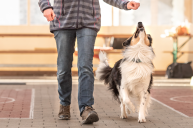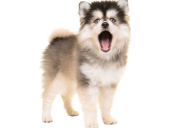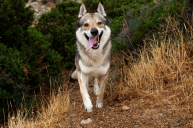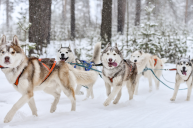A working dog from Siberia, the Siberian Husky is indeed beautiful. You should consider a few things first though, especially if you're a first-time dog owner.
Siberian Huskies are admired for being beautiful dogs, but they're much more than a pretty face.
Annually ranked on the American Kennel Club's (AKC) list of most popular dog breeds, Huskies are showing up more and more as new family members across the country. TV shows like "Game of Thrones" put the breed in the spotlight, and their impressive-looking features are attracting dog lovers and hopeful pet owners. They're big, beautiful, and can make great companions and partners, but they're also not for everyone. Owning a husky is a responsibility that shouldn't be taken lightly.
Understanding Huskies
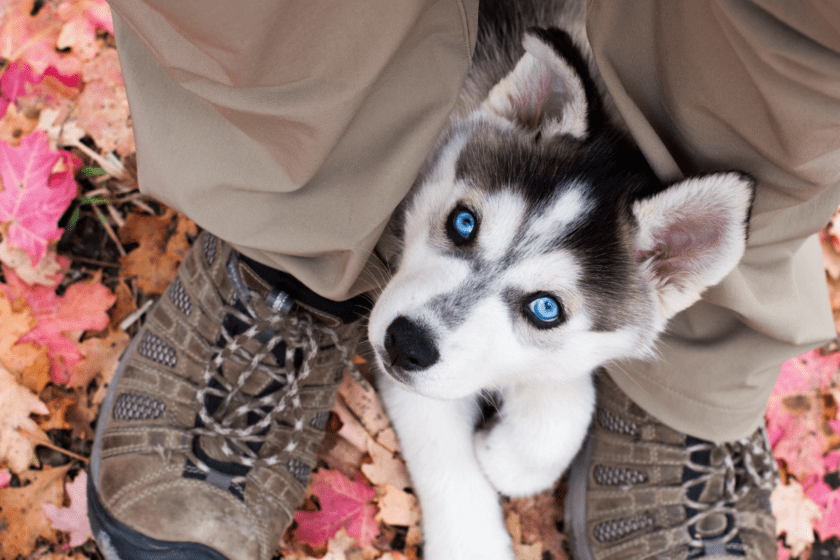
The Siberian Husky is a medium-sized sled dog that has amazing endurance. These dogs were bred to pull sleds over long distances, and they tend to get along well with other dogs. They're smaller compared to Alaskan Malamutes but just as enthusiastic about their jobs.
Huskies were originally bred by the Chukchi people in Asia, but their hardiness and ability to handle cold temperatures made them favorites of mushers in Alaskan areas. Today, mushers use Huskies for sledding throughout North America, though this breed has also become a favorite of many families.
Owning a Husky: Tips to Remember
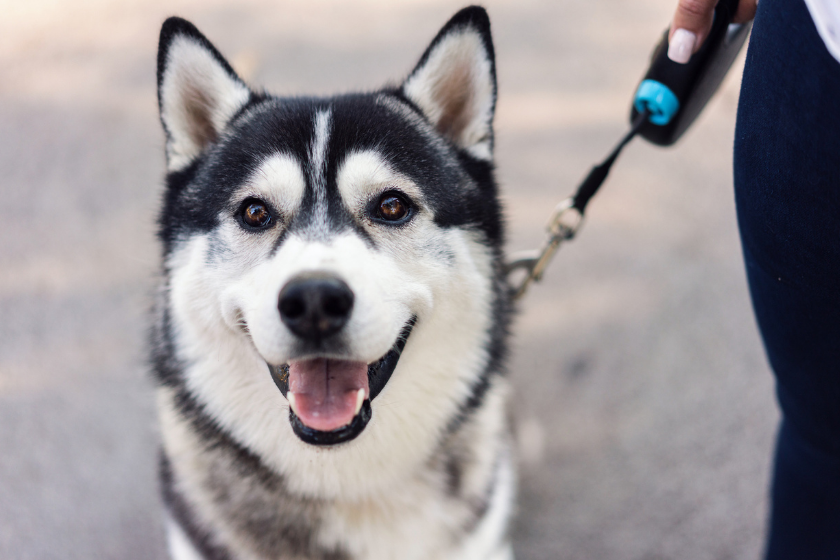
Huskies are relatively healthy with few health problems, especially if they're getting a lot of exercise. Breeders should screen for issues like juvenile cataracts, and it's recommended that Huskies also be evaluated for hip health and other potential issues as well.
Working Siberian Huskies require some dietary changes to help keep them healthy and will need higher protein foods when they're in intense work. Huskies who enter periods of lower-intensity work will need food that's around 20 percent protein, but active huskies in training for sledding need a dog food that's closer to 32 percent protein. Also, this breed is highly social and will benefit from training when young. Siberians love to run and do well with a fenced-in backyard as well as with another dog to play with.
These beautiful dogs offer plenty of benefits, but consider these five Husky facts before bringing home your own!
1. Endless Energy
Bred as sled dogs, Huskies aren't the kind of pet that'll be happy snoozing all day on the couch. They have the energy to burn, and if they're not given the right outlet, they'll find their own way to get the vigorous exercise and stimulation they need.
A bored Husky with pent-up energy will turn to destructive and troublesome behaviors. If you want to own a high-energy dog, you'll need to commit to daily walks, runs, and social outings. Leaving them to entertain themselves in the yard won't cut it. If you think about it though, the Husky breed may make you into a more active person, benefitting everyone involved.
2. Skills Like Houdini
High-energy paired with an impressive intellect means Huskies are skilled escape artists. They have a natural instinct to roam and explore, and an average fence won't be enough to stop them.
An athletic and determined Husky can easily leap over a six-foot fence, and if they can't go over, they'll look for other ways of escape. Your fenced yard will likely need to be reinforced if you plan on keeping a Husky confined while unsupervised. Many Huskies end up getting lost and hit by cars because they refuse to stay behind even a high fence.
3. Fur-Flavored Everything
Nearly all dog owners have to deal with shedding, but Huskies take it to another level. They're built for cold climates, and they have both an undercoat and topcoat with what's known as a double coat. Huskies usually "blow" their coats in the spring and fall. This means the undercoat sheds excessively as the new topcoat grows in. It lasts for about three weeks, and the result is enough dog hair on the floor, furniture, your clothes, and mixed in with your food to make it look like you own an entire sled team.
If you don't want to drown in a fluffy mountain of your dog's fur, you'll need to commit to daily grooming and vacuuming. (So make sure to be friends with your vacuum cleaner!)
4. Independent Spirit
There's no doubting that Huskies can be loyal and loving to their owners, but their independent nature holds them back from being the lovable lap-dogs many people want. They're notorious as a stubborn breed of dog, and they'd much rather do things their way than obediently abide by house rules. On top of that, huskies are pack animals by nature and carry a high prey drive, meaning obedience training and a lot of mental stimulation during their socialization window as small puppies is critical.
This can make training difficult, but not training a Husky is out of the question. Husky owners need to be patient, determined, and consistent.
5. Climate Concerns
Huskies do best in cold weather. They're originally from the Arctic, and their fluffy coats, paws, ears, and even eyes are all examples of physical adaptions that make them perfectly suited to cold temperatures. You don't need to live in the North Pole to own a Husky, but climate should still be a concern.
Huskies overheat easily, and they don't do well in hot, tropical areas. If you live somewhere where it's warm all year-round, be prepared to keep the AC running and provide your dog with suitable shade and water when outside.
Huskies: A Lifelong Commitment
The most important thing to remember when thinking about bringing a Husky into your home is that owning a dog is a lifetime commitment. There are no loopholes that relieve you of responsibility if your dog becomes too much to handle. From the moment you bring them home, they depend on you to provide a stable, loving home.
Huskies are beautiful working dogs with loving personalities, and for the right families, they make exceptional pets. Do your homework to ensure a Husky is right for your family and lifestyle.
If you're looking for a Husky puppy, think about adopting from a Siberian Husky rescue group or finding a reputable breeder through the Siberian Husky Club of America.
Do you own a Husky? Let us know on the Wide Open Pets Facebook page!
This article was originally published August 31, 2019.

